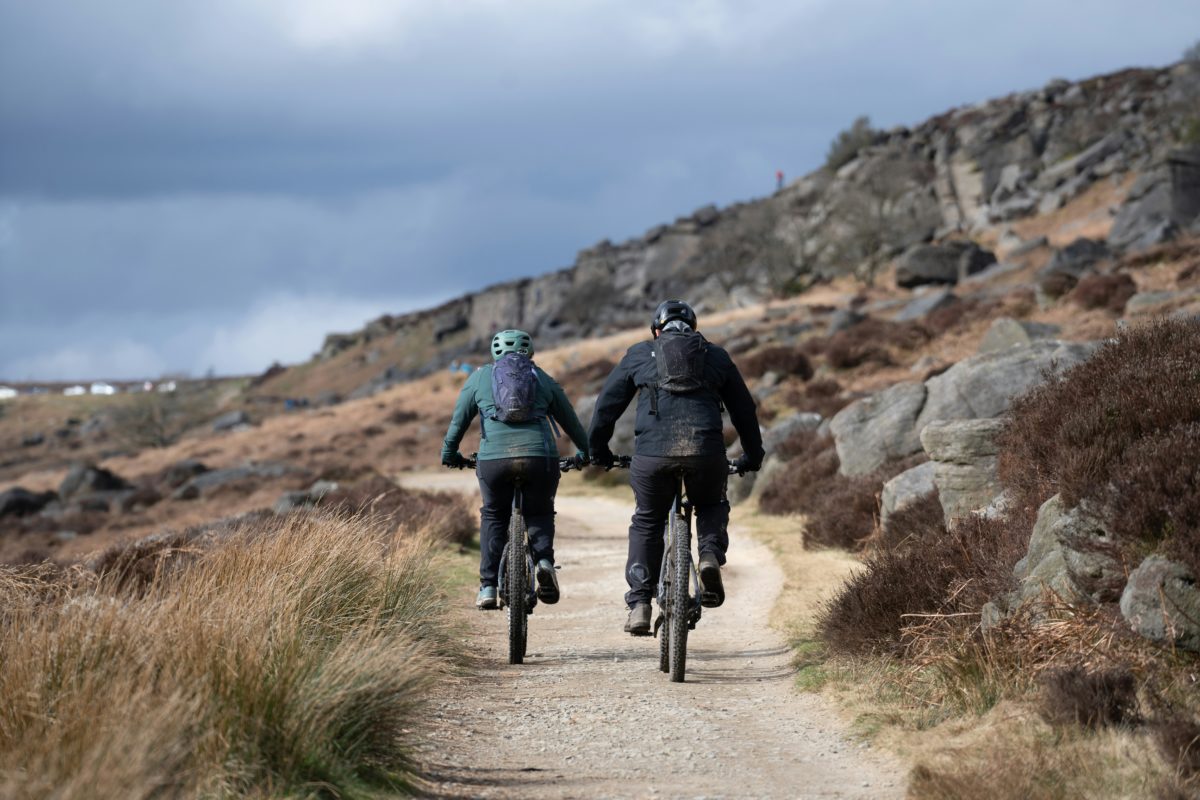
- Categories:
- News
- /
- Announcement
- /
- Blog
It’s Time to Think Again About Rural Mobility
Blog: By Dominic Scholfield, Mobility and Strategy Team Leader, Cenex
Cycling has mostly been thought of as an urban transport solution in the UK, but a few key developments mean it could play a much bigger role in rural areas.
In the UK, our focus on reducing car dependence in rural areas has traditionally centred on buses. While cycling is considered a viable option for urban transportation, it’s often perceived as limited to shorter journeys within rural villages or towns. Longer trips on fast, narrow rural roads can be intimidating for all but the most dedicated cyclists.
This is a significant issue, as bus services in many rural areas are in a state of decline. While car ownership is high, with only 5% of households in rural areas not having access to a car (compared to 15% overall), this figure increases to nearly 30% for low-income households. Additionally, there are people who are too young, old, or disabled to drive. Since councils are unable to subsidise sufficient rural bus services, there is an urgent need for new ideas.
There are two key developments that mean we should look again at the role of cycling in a rural context. The first is a new approach to rolling out new off-road cycle paths (also suitable for scooters and mobility aids), and the second is the inexorable rise of the e-bike.
The key to a much faster and wider rollout of paths away from roads altogether is a little thing called ‘permitted development rights’. To date, most off-road paths such as those built by Sustrans have gone through a full planning process, which often takes longer than the building work itself. By contrast, permitted development is simply asking landowners for permission to put a path across their land[1], and full planning is only required where it meets a road. Pioneers John Grimshaw and Caroline Levett (who founded Sustrans many years ago) are now using this approach to roll out new paths around Somerset in weeks rather than years[2].
While an extensive network of off-road paths makes it pleasant and safe to cycle or scoot from village to village or town, e-bikes shrink the distance. A trip of 5-10 miles is possible on a bike, but the time and effort required is daunting or impractical for most people – but with an e-bike it’s possible without breaking a sweat, for a far greater range of people, while still providing the benefits of active travel. E-bikes have surged in popularity in recent years, with prices falling and availability increasing[3].
It’s easy to see the difference these two factors can make – one only has to look across the channel to the Netherlands, or indeed look at the popularity of Sustrans routes here in the UK. Combining dedicated paths between villages/towns with blanket 20mph speed limits within them can create a continuous network of safe routes for everyone.
Paradoxically, rolling out this kind of network could be key to rejuvenating rural bus services. I’ve blogged before about the need to focus rural bus services on fewer, faster, more frequent services, linked to population by other modes where necessary, through cycling infrastructure, demand responsive transport etc.[4] The other component will be journey planners that can help promote this kind of multimodal journey, probably incorporating the latest generation of AI (which I’ve also blogged about[5]).
At Cenex, the Mobility Team is working on another piece of this puzzle: turning rural bus shelters into mobility hubs. This project, in partnership with East Lothian Council and urban design studio Quarterre, is part of Innovate UK’s programme of Transport Decarbonisation Demonstrators. We will be sharing more details about its progress in the coming months.
Learn more about our work on mobility hubs here: IUK East Lothian Bus Shelter – Cenex
[1] Farmers may soon also receive a payment for this. Farmer’s Weekly reported in January that the Sustainable Farming Initiative would this year include payments to farmers of £158 per 100m per year for allowing bridleways on their land. (Sustainable Farming Incentive 2024: What farmers need to know – Farmers Weekly (fwi.co.uk)) Clearly this would help the rollout of more paths. However, at the time of writing this was not shown as being available under SFI on the government website.
[2] ‘It’s unbelievable the difference a path has made’: how volunteers are building a cycle network a yard at a time | Cycling | The Guardian
[3] UK electric bike sales value hits 23% of total, says Mintel (cyclingindustry.news)
[4] Is it time to be more radical in rethinking rural buses? | Transport Trends (transport-trends.com)
[5] What role could AI play in creating truly multi-modal journey planning, and maybe shaping our future travel behaviour? (cenex.co.uk)